Climate crisis
Sydney-based think tank Institute for Economics and Peace (IEP), published on Wednesday (Oct 19) the newest edition of its Ecological Threat Report (ETR).
Assessing which countries are most at risk from conflict, civil unrest and displacement caused by ecological degradation, the report found that countries in Africa were particularly vulnerable.
Projections to 2050 show that much of sub-Saharan Africa will be unsustainable. The main factors accounting for this unsustainability are: high levels of air pollution, poor sanitation, high homicide rates and substantial ecological threats combined with high population growth.
The 77-page report highlights 27 'hotspot' countries, which face the worst ecological threats and have the lowest societal resilience. 23 of the 27 are in sub-Saharan Africa and MENA.
Food stress
41 countries are currently facing severe food insecurity, impacting economic development, public health, and social harmony. 830 million people living in these countries are at risk, with 89% residing in sub-Saharan-Africa, followed by MENA with 49 million.
According to the World health organization, people facing severe food insecurity have run out of food and gone a day or more without eating.
The level of undernourished is also worrisome. The number of people affected has increased by 35% in 2021 to over 750 million people. Undernutrition is a malnutrition condition. It includes wasting (low weight-for-height), stunting (low height-for-age) and underweight (low weight-for-age).
Undernutrition is expected to deteriorate due to increasing ecological degradation, rising inflation, and the Russia-Ukraine war.
In addition to that, over 1.4 billion people across 83 countries now face extreme water stress, with more than half of these countries located in Africa.
Natural disasters and mass migration
Sub-Saharan Africa is the second region most impacted by natural disasters.
With natural disasters becoming more frequent, communities will struggle to recover before the next one occurs. As it has already been observed, climate-related disasters often lead to forced mass migration.
In 2021, countries that experienced the highest internal displacements from conflict and natural disasters included Syria, Ethiopia, The Democratic Republic of Congo, Afghanistan, and South Sudan.
Asia-Pacific is the first region the most affected by natural disasters. Central America and the Caribbean are other particularly affected regions. The latest multi-agency report on climate revealed that the number of weather, climate and water related disasters has increased by a factor of five over the past 50 years.
Climate concern
Regions exposed to the highest levels of ecological threat are on average the least concerned with climate change, with sub-Saharan Africa and South Asia ranking war, terrorism, crime, violence and livelihoods as of greater concern.
Since 2019 the world has become less concerned about climate change, dropping by 1.5% to 48.7%.
Many African countries are counting on the 27th session of the UN Climate Change Conference will set to kick off on early November in Sharm el—Sheikh to tackle climate injustice.
Steve Killelea, the founder and executive chairman of the Institute for Economics and Peace (IEP) also views this event as a chance to seize in order to bring about changes.
"As we approach COP27, this report is a timely reminder that the costs of many of the existing ecological challenges will only be amplified by climate change", he said.
"The world’s current approach to the countries suffering the worst climate-related issues is not working; ecological threats are increasing and have systemic causes that require systemic solutions", Killelea pleaded.
The IEP executive chairman urged "governments and international agencies" to "invest in building long-term resilience to avert future ecological destruction, forced migration and conflict."
Steve Killelea also urged for development programmes to support SMEs: "Developmental programmes should focus on micro enterprises which capture water, improve agriculture and on value-added manufacturing. This will improve the lives of the people who are suffering the most."
Low coping capacities in megacities
There are currently 33 megacities, with 2 located on the continent: Lagos (Nigeria) and Kinshasa (DRC).
14 cities are expected to become megacities by 2050 with 4 African cities joining the group.
Namely, Dar es Salaam (Tanzania), Nairobi (Kenya), Khartoum (Sudan), Luanda (Angola). These very large cities with more than 10 million residents will face challenges as time passes.
Over 60% of current megacities are in low peace countries. They have the highest population growth rates, poorest sanitation, higher levels of petty and organised crime, and substantial ecological threats (e.g. pervasive air pollution).
However, to cope with these challenges most of the poorer megacities "lack the financial capacity and governance", the report found.
On the continent Kinshasa, Nairobi, and Lagos are the most likely to face the harshest challenges.
Dar es Salaam and Nairobi, predicted to grow their population by more than 100% within the next 30 years when Kinshasa, Lagos and Khartoum are likely to increase their population by more than 80%.
Their high population growth coupled with no adequate framework to address existing challenges highlights a "precarious relationship with unsustainability". With low coping capacities, they "will struggle to manage ecological threats."



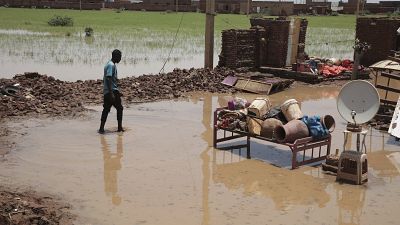

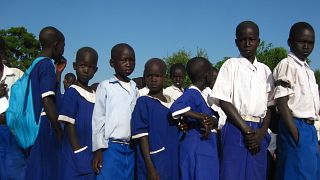
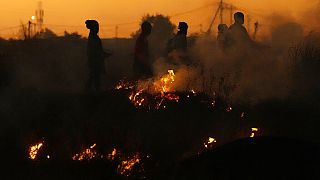


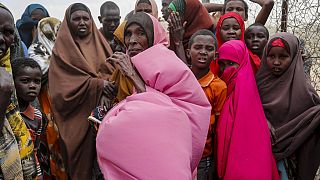

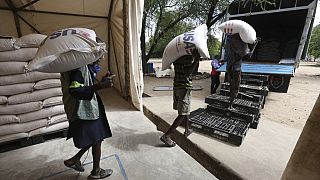


Go to video
WAFCON 2024/25: Road to the semi-finals begins
Go to video
U.S deportees put in solitary confinement in Eswatini: government spokesperson
Go to video
Togo holds first local elections since controversial power shift
Go to video
"No Substance": Burna Boy apologises for controversial statement about Afrobeats
01:09
Prince Harry visits Angola in repeat of Diana's iconic 1997 trip.
Go to video
Former Nigerian President to be buried today